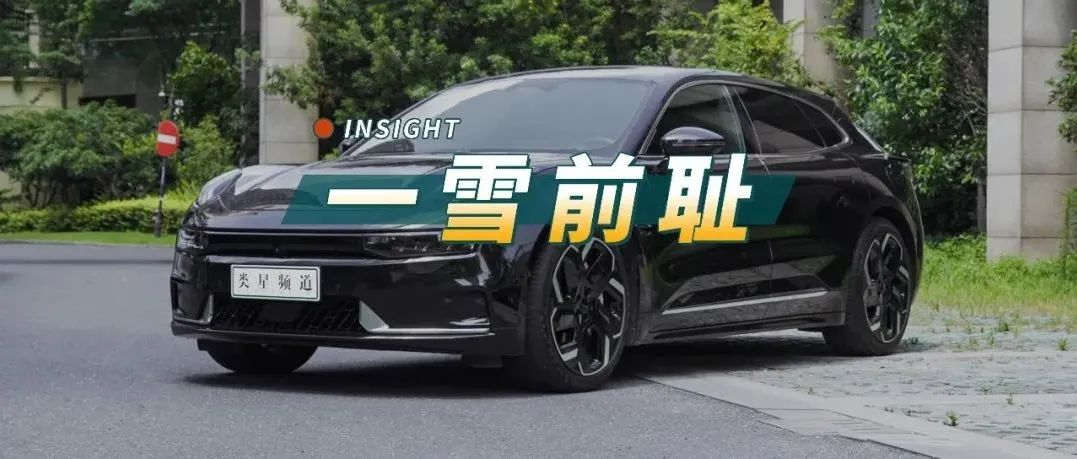Author: Xiao Dong
Editor: Chris
On July 11th, the largest and most important software and hardware upgrade for Jika 001 was released since its delivery. Covering cockpit domain, intelligent driving domain, chassis domain and body domain, it brought a significant upgrade in the intelligent and driving experience.
Regarding the updates in the intelligent domain, Similar to Star Channel experienced it on site, including the performance of the car-mounted computer after the upgrade of the 8155 chip, experience of the LCC function, and more. Stay tuned for the video.
In terms of the intelligent cockpit, which users perceive as problematic and has been complained about most frequently, Jika decided to set the upgrade price of the 8155 chip at 0 yuan, yes it’s free.
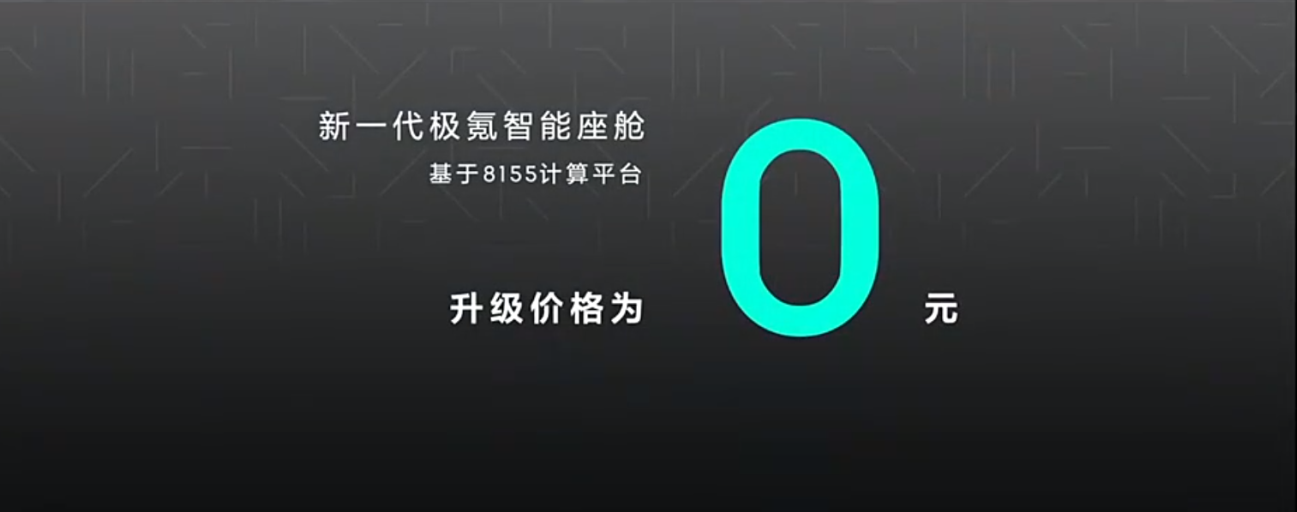
So, what will happen to the car-mounted computer of Jika 001 after the upgrade?
The giant leap forward of the car-mounted computer
To describe the cockpit experience of Jika 001 in the early stage, it can only be described as terrible. Among the significant amount of user feedbacks, the most frequently mentioned one was the poor cockpit experience. Including car-mounted computer lagging, navigation failure, car networking failure, and other series of problems.
Among these, Jika’s insufficient software engineering ability is one of the reasons, but the insufficient hardware capability cannot be ignored either. Jika 001 uses the 820 A chip. As a car model just delivered in September 2021, it can be described as “outdated upon delivery”.
After this upgrade, Jika 001 will be equipped with the currently mainstream Qualcomm Snapdragon 8155 chip and the operation memory will be increased from 8G to 16G. Higher memory is sufficient to enhance the response speed of the car-mounted computer when running multiple programs. In addition, compared with the 820 A chip, the 8155 chip has an improvement in CPU computing power by 177% and GPU computing power by 94%.
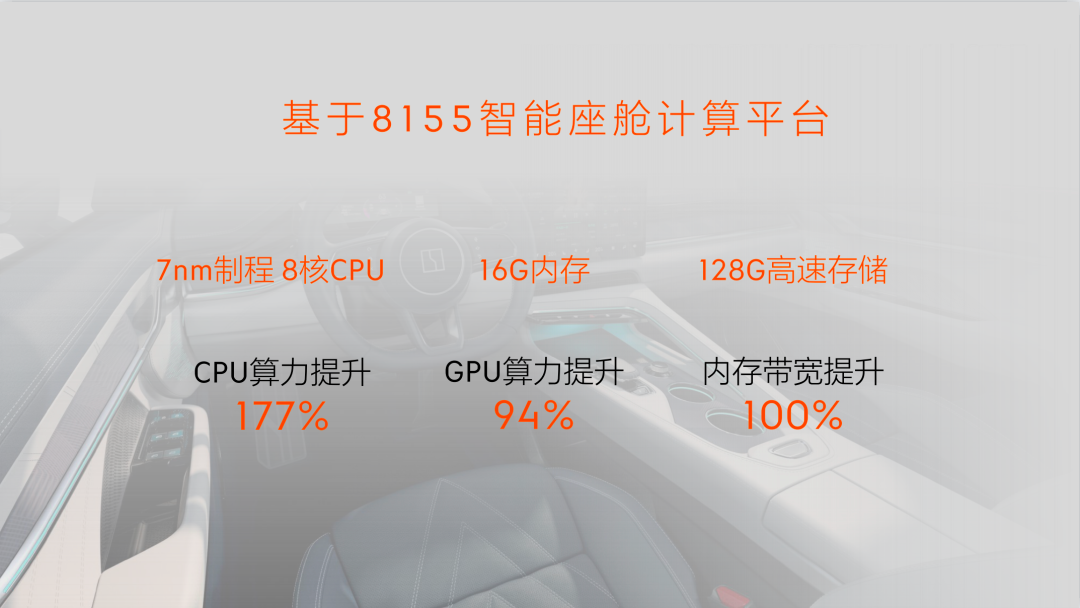 Upgrading the 8155 chip for old users is a simple process, as Xu Yun, Vice President of JiKe Intelligent Technology, said, “After pushing the auxiliary instrument panel backward, the chip can be disassembled and replaced without damaging the car, although it looks scary.” Additionally, the hardware replacement for the 8155 chip only takes 35 minutes, while software upgrade takes about 2 hours.
Upgrading the 8155 chip for old users is a simple process, as Xu Yun, Vice President of JiKe Intelligent Technology, said, “After pushing the auxiliary instrument panel backward, the chip can be disassembled and replaced without damaging the car, although it looks scary.” Additionally, the hardware replacement for the 8155 chip only takes 35 minutes, while software upgrade takes about 2 hours.
From actual experience on the Like Star channel, the smoothness of the in-car system was significantly improved after upgrading to the 8155 chip, with faster application response time. JiKe also provided data reference:
- 2 seconds for in-car wake-up time
- 20 seconds for cold start-up speed in low temperature/low battery situations
- 66.1% increase in sliding frame rate
- Average of 1.3 seconds for in-car application opening time.
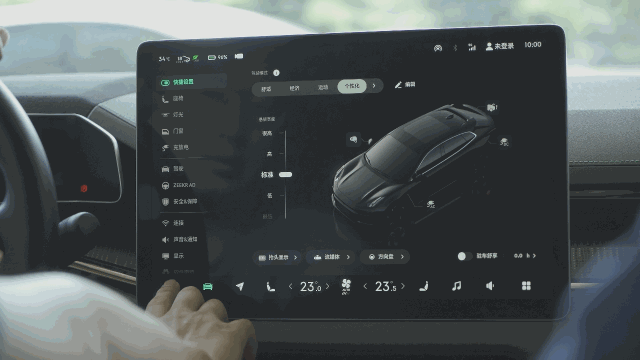
There is no difference in the smoothness of the in-car system between the current mainstream car models powered by the 8155 chip, and the 2 seconds of wake-up time is enough to satisfy users’ seamless experience when getting on the car. Compared with other 8155 car models, JiKe upgraded the memory to 16G, providing a solid foundation for continuous optimization in the future.
Besides hardware upgrades, the more important thing is the full iteration of JiKe’s in-car system.
Firstly, the contrast of the in-car UI is stronger, with higher distinguishability, and the basic function cards such as weather, time, and basic functions are still on the far left, while the middle part is adjusted to a detailed thumbnail map card. Even without opening the map application, users can view specific map and navigation information through the main interface. The right side displays the music card with the playlist. We can compare the visual experience before and after the update (the upper picture is before the update, and the lower picture is after the update).
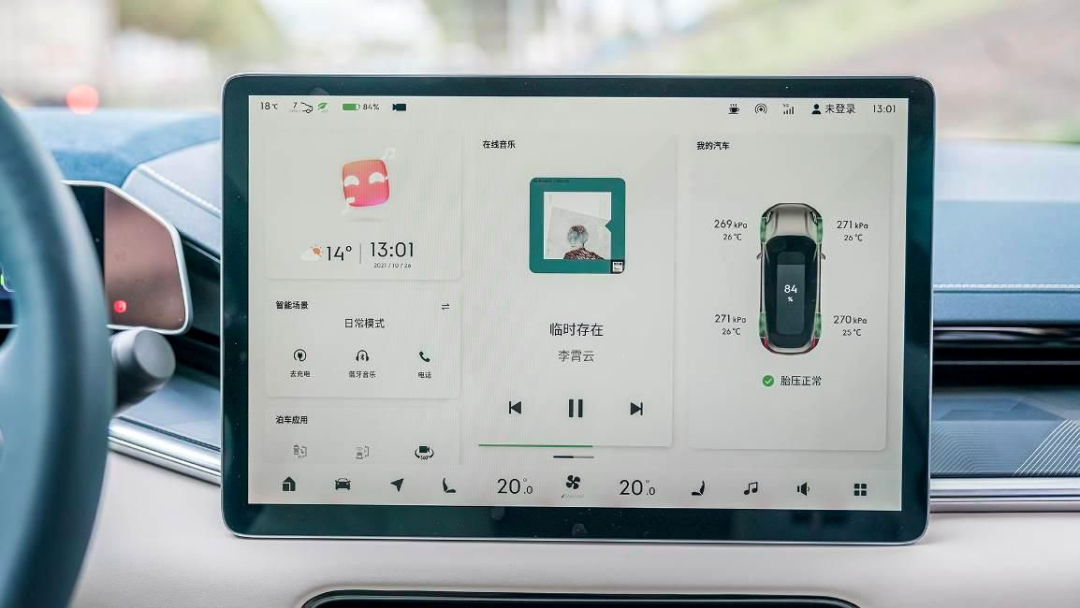
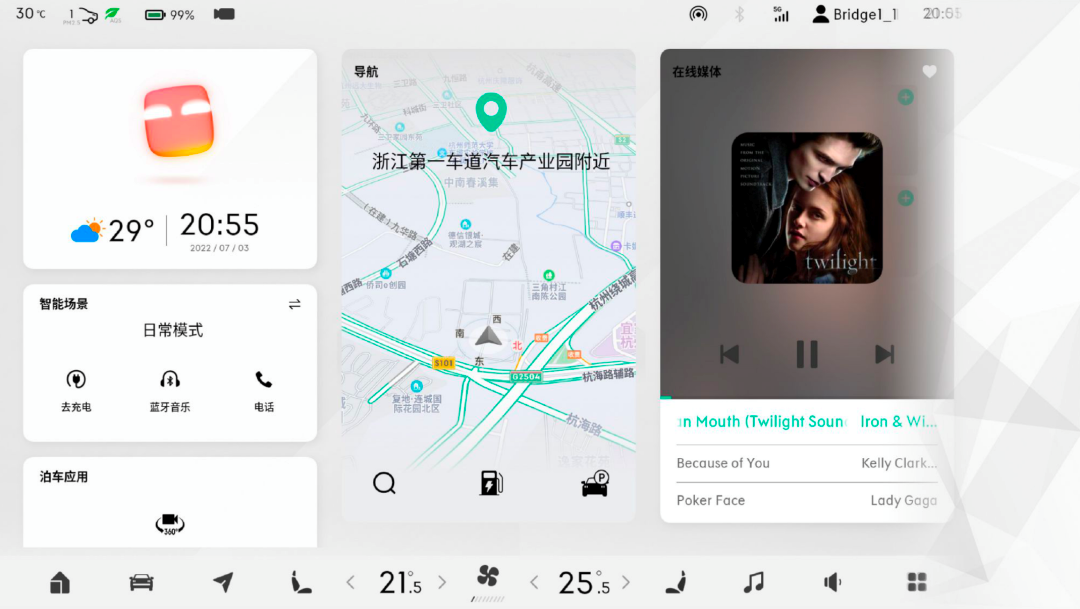
Secondly, the user interface has further enhanced the human-machine interaction experience. For example, the core position is reserved for high-frequency user operation scenarios, the function keys are integrated with the vehicle model, and the function keys are closer to the driver, making it easier for the driver to understand and operate the in-car system. In addition, the first-level menu is more intuitive, with a flattened functional logic and more detailed models, which will undoubtedly be more apparent to many old car owners after the OTA update.
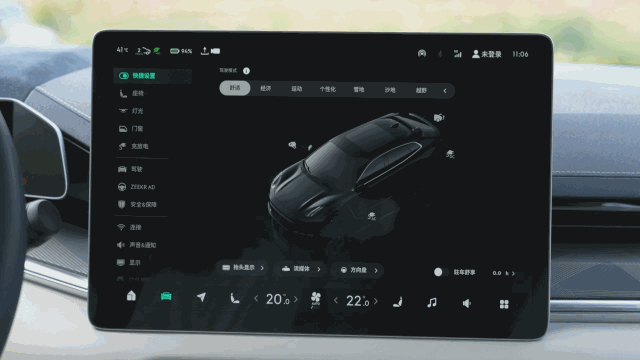 The last feature is the slide control center, which is self-explanatory and similar to the one on our smartphones. Zeekr 001 has 18 frequently-used functions, such as brightness adjustment, driving mode, and notification center, and these functions can be customized by users. Compared to a multi-level menu bar, this provides a more direct and convenient experience for the driver.
The last feature is the slide control center, which is self-explanatory and similar to the one on our smartphones. Zeekr 001 has 18 frequently-used functions, such as brightness adjustment, driving mode, and notification center, and these functions can be customized by users. Compared to a multi-level menu bar, this provides a more direct and convenient experience for the driver.
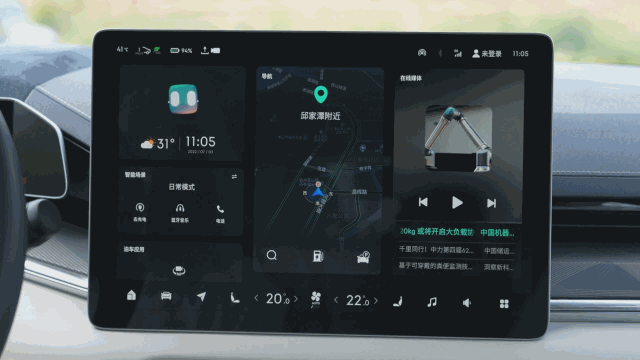
Moreover, the voice interaction system has been upgraded. Eva, the voice assistant, has improved in response time, recognition rate, and speed of performing tasks based on semantic understanding. In addition, there are more controllable functions, with 70 new and optimized semantics covering various scenarios. The “speak to command” function, offline voice recognition, and the main driver’s continuous wake-up-free dialog function will also be available to users after this OTA update.
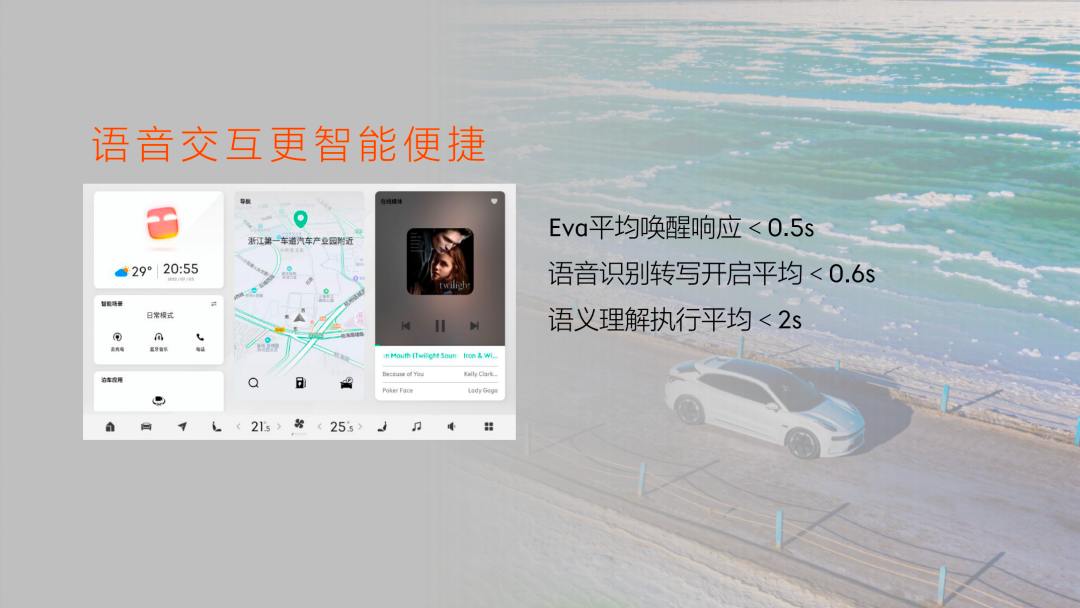
After this software update for Zeekr 001, the navigation system will switch from Baidu Maps to Amap, and it will support self-operated charging station filtering, team travel, and mobile phone-car interconnection functions. The latter is worth mentioning as users can seamlessly transfer navigation from their phones via Amap to their car. When the destination requires walking, it will be automatically sent back to the user’s phone for easy navigation.
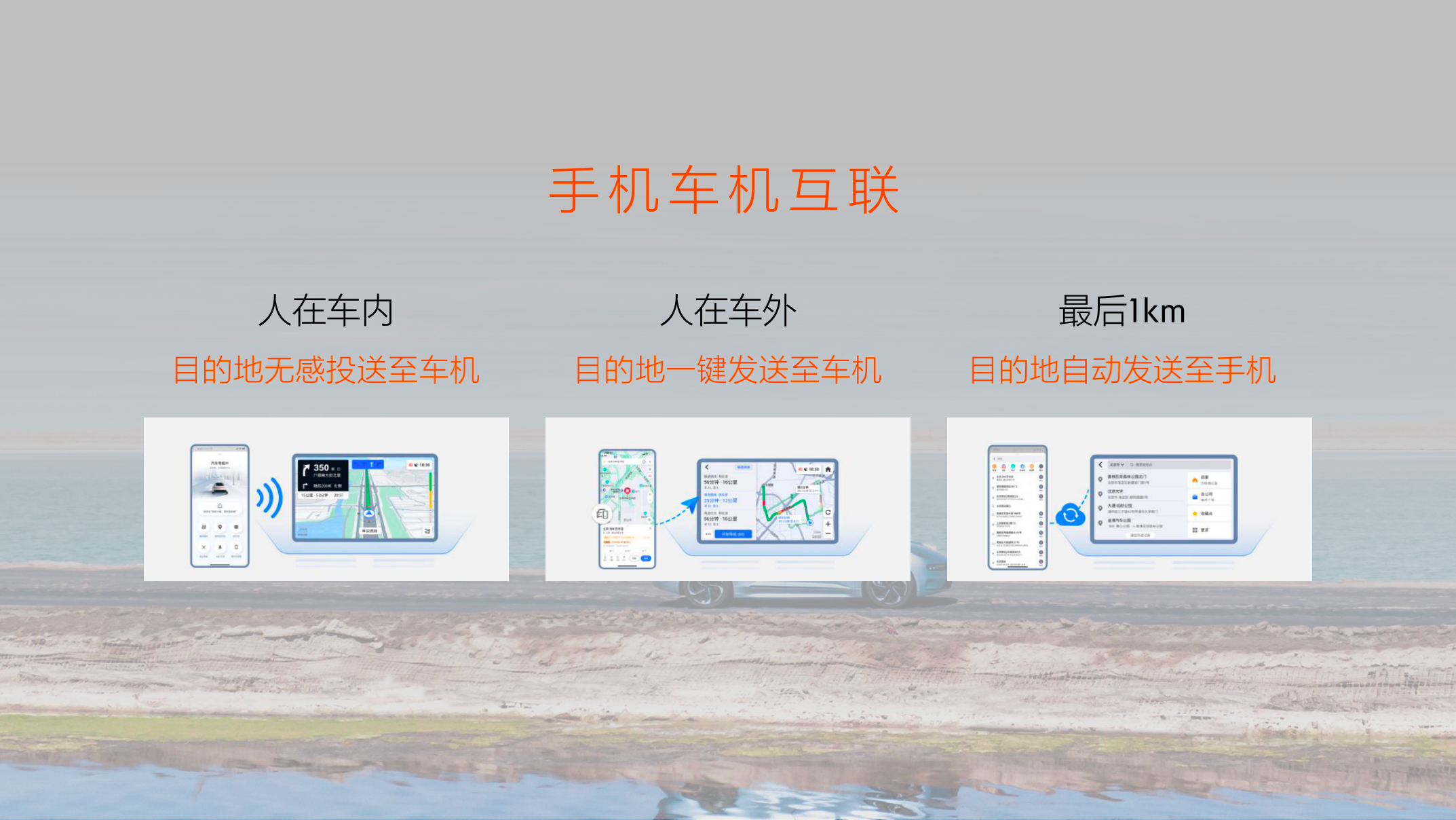
Regarding audio, Tencent Ai Qu Ting has been added, and Kuwo Music has been replaced with QQ Music, along with more features such as audiobooks, radio, and news.
In conclusion, this major upgrade for Zeekr 001 accelerates not only the speed of the vehicle but also the general user experience through more convenient human-machine interaction and an enhanced cabin experience. Zeekr is making up for its shortcomings compared to other traditional car companies, even though its smart car experience is not as strong as that of Tesla. Their quick response and high efficiency in responding to these changes are worth our attention.
The Long-Awaited LCC
LCC, Lane Centering Control, is a “basic” assisted driving function.
For Zeekr 001, they are not only competing with traditional car companies but also new and upcoming models from other smart car companies. A car priced at 300,000 yuan that was delivered in September 2021 could not satisfy users without even basic assisted driving functions like ACC, let alone LCC.After all, the Zeekr 001 is a model equipped with 7 8-megapixel cameras and the first to feature the Mobileye EyeQ5H chip. Zeekr’s cooperation with Mobileye has also led to the mention of pure visual end-to-end auxiliary driving capabilities like Supervision, which has caught everyone’s attention.
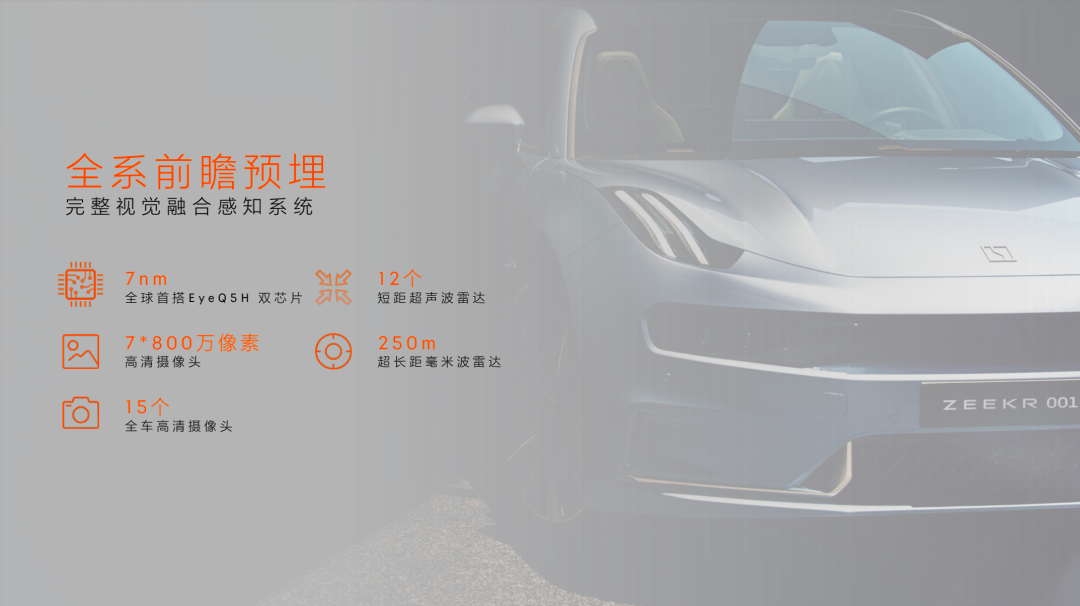
There are several reasons why Zeekr 001 cannot rapidly launch its auxiliary driving capabilities. On the one hand, Zeekr has used many new chips, and the uncertainty of the chips and the testing of related hardware such as the intelligent driving domain controller have led to slow project progress. On the other hand, the release of the EyeQ5H chip is also encountering numerous engineering and testing issues. Additionally, the working efficiency of the collaboration between Mobileye in Israel and Zeekr in China may be affected, especially under the premise of the global pandemic.
The formal launch of the LCC has temporarily concluded the basic auxiliary driving capabilities of the Zeekr 001. Based on actual experiences from the class-leading channel, the lateral abilities of the LCC are excellent, and lower-level issues like “painting a dragon” have not shown up. However, in terms of longitudinal abilities, the acceleration and deceleration may be slightly less linear. Another issue is that the visual display disappears suddenly while the vehicle is in a tunnel. Although the auxiliary driving system has not exited, the user’s trust level will significantly decrease.
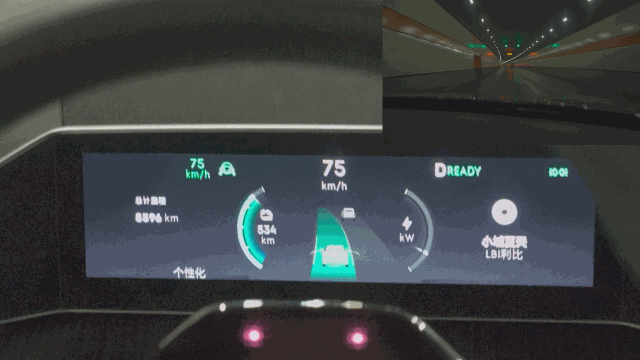
It is worth mentioning that the Zeekr 001 supports “antelope evasion”. When encountering pedestrians, the vehicle will slow down and pass actively; when there is a large truck on an adjacent lane, the vehicle will automatically move away, and when facing a stationary vehicle opening doors, or other vehicles occupying the lane, it will decelerate and evade.
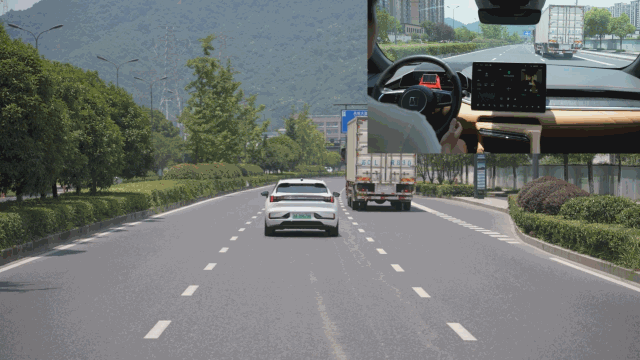
Among them, identifying door-open vehicles has an incredibly high requirement for perceptual abilities. This may be the only auxiliary driving capability that can support identification of vehicle open-door status besides Tesla’s FSD Beta. This strong perceptual ability will play a vital role in achieving higher-order intelligent driving capabilities in the future.
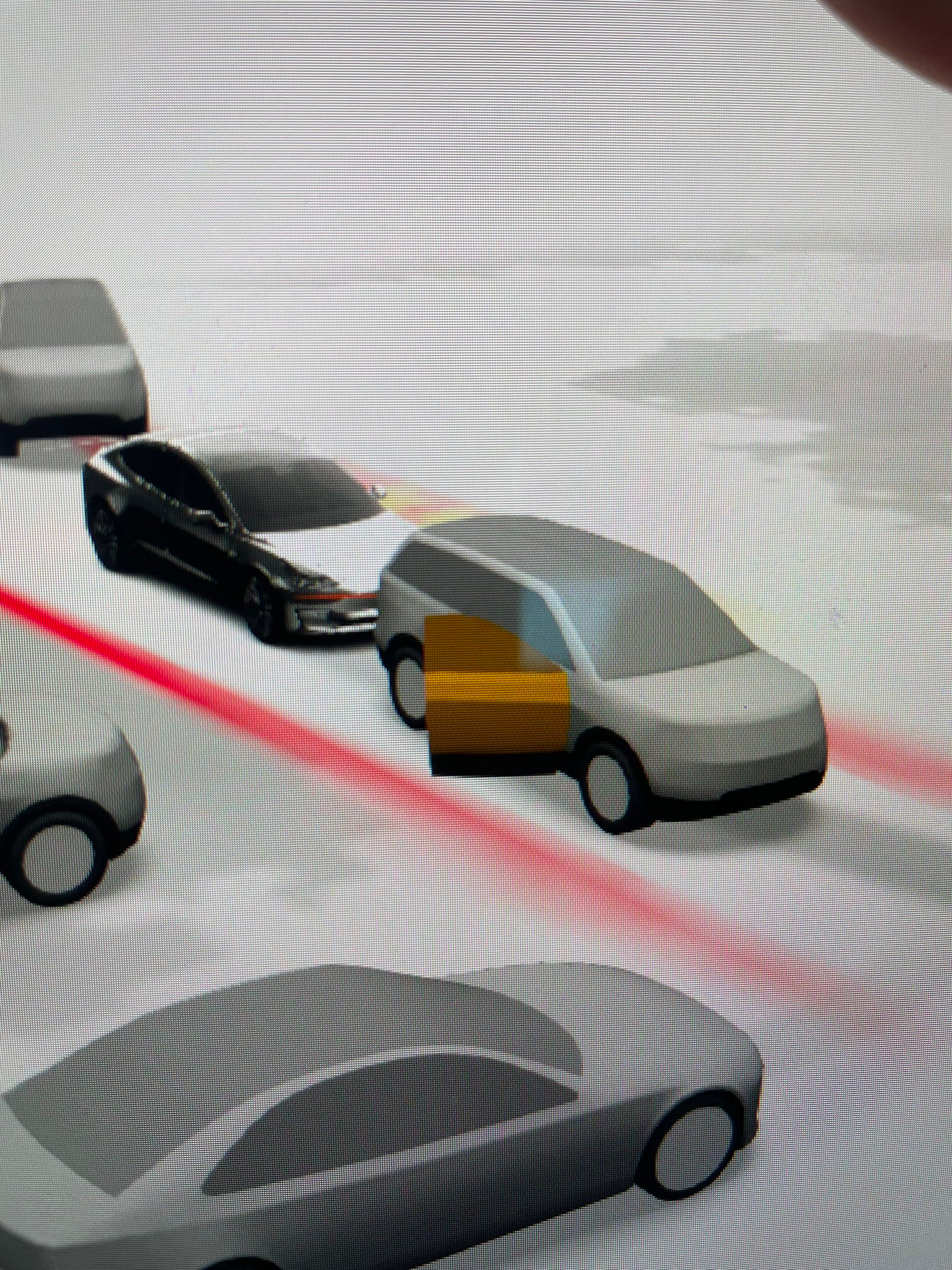 Regarding the issue of disappearing visual information mentioned earlier, Chen Qi, Vice President of Smart Driving at JiKe and former head of Huawei’s ADS product development department, stated that “it may be the case that when detecting lanes that are too short, the lane markings were filtered out excessively. We will restore the lane markings and make improvements.” The issue of non-linear acceleration and deceleration will also be fine-tuned for better results.
Regarding the issue of disappearing visual information mentioned earlier, Chen Qi, Vice President of Smart Driving at JiKe and former head of Huawei’s ADS product development department, stated that “it may be the case that when detecting lanes that are too short, the lane markings were filtered out excessively. We will restore the lane markings and make improvements.” The issue of non-linear acceleration and deceleration will also be fine-tuned for better results.
At the same time, Chen Qi revealed that Mobileye is also preparing to transfer some core research and development to Hangzhou Bay (JiKe headquarters), and “currently, some of JiKe’s engineers are already working with Mobileye personnel, which will greatly improve efficiency.”
Currently, JiKe’s smart driving team has nearly 500 people and operates on two parallel tracks. One is the supplier mode, which is the Mobileye collaboration mode we have seen with over 100 people. The other is the self-research mode, with over 300 people. It is expected that both tracks will continue to run in parallel until the second half of next year and learn from each other.
After this OTA update, the basic auxiliary driving ability of JiKe, including ACC (activated at 2 km/h) in combination with LCC, will be guaranteed. In the future, JiKe 001 will also introduce highway navigation assistance and visual fusion parking functions. It is believed that efficiency will be further improved, accelerating the launch of more auxiliary driving functions.
In addition to intelligent iterations, this OTA also focuses on the iteration of tire slip prevention and headlight functions.
With the larger starting torque of electric cars, it is easy for the wheels to slip on icy and snowy roads. This time, JiKe 001’s OTA update includes the dTCS distributed traction control system. What does this mean? The dTCS control program DMC (Dynamic Torque Control Unit) is integrated into the MCU (Motor Control Unit), so the slip signal is no longer transmitted through the VCU (Vehicle Control Unit), shortening the response time compared to traditional TCS (Traction Control System).
According to JiKe, the dTCS system has a control signal transmission and complete response cycle that is ten times faster than traditional TCS systems. This means that dTCS can quickly sense slipping conditions and control torque to reduce situations where tires slip, allowing the vehicle to quickly enter a stable state and enhance driving confidence. In addition to JiKe 001, the BYD Han 4WD version also features dTCS functionality.After this OTA update, the headlights of Zeekr 001 have added ADB adaptive function. By collecting road information through the front 800 W dual cameras, it can perceive the position of oncoming vehicles and dynamically adjust the lighting by controlling the light-emitting units inside the headlights, avoiding high beam to the front or oncoming vehicles and improving safety. For traffic signs, it will automatically weaken the illumination brightness in that area to avoid glare.
Currently, Zeekr 001 can support intelligent blocking of 10 targets, including 8 precise shielding of mobile light sources and 2 weakening of reflective traffic signs.
At the press conference, Zeekr CEO An Conghui also revealed an Easter egg: “Zeekr 001 will have OTA race mode and drift mode in the future, which is currently under development.”
In addition to the four major domain updates, Zeekr also introduced a new version of the car, Zeekr 001 extended range dual-motor ME version, starting at RMB 349,000, with an acceleration of 3.8 seconds per hundred kilometers and a CLTC range of 616 km.
Simply put, the YOU version does not have electric doors and air suspension, but it is regrettable that the “Lightning Switching” function newly launched for the 2022 YOU version has not appeared on the ME version.
This “Lightning Switching” function can enable the 2022 YOU version of Zeekr 001 to support three modes of intelligent switching, namely full-time rear-wheel drive, timely four-wheel drive, and full-time four-wheel drive.
Simply put, a clutch is added to the front motor to completely separate the front motor within 25 milliseconds according to the selected mode, which means that the front motor will not generate drag torque when it is not needed, achieving a decrease in energy consumption of about 5%. Finally, the CLTC range of the 2022 YOU version has increased by 34 km to reach 650 km.
However, this lightning switching intelligent four-wheel drive is only available on the new Wirui motor model. Due to hardware changes, it is indeed impossible for old versions to be upgraded through OTA.Before the appearance of the new version, the price difference of nearly 90,000 yuan between WE version and YOU version has indeed hindered the needs of many users who want both endurance and performance, especially for those excellent players with excellent mechanical qualities. With the new version, it can be seen that JEEKEE has brought the best balance point in terms of performance, configuration, price, and comprehensive experience, and there is no forced standard suspension and electric door. This not only can significantly reduce the selling price, but also to some extent can avoid delivery problems caused by supplier issues.
With this large-scale OTA upgrade, JEEKEE 001 has filled its biggest weakness. Judging from the iterated JEEKEE 001, it has become a stronger competitor in the price range of around 300,000. For more than 20,000 old car owners, enjoying the free upgrades of software and hardware is definitely a big thrill.
This article is a translation by ChatGPT of a Chinese report from 42HOW. If you have any questions about it, please email bd@42how.com.
